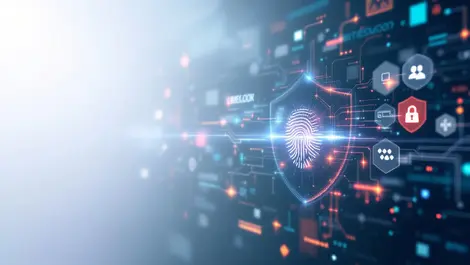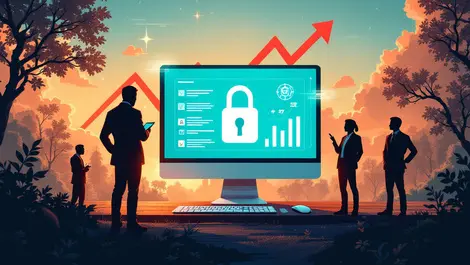Cybercrime stories - Page 2
Any use of network connected electronic devices such as computers or smartphones for criminal activity
is classified as cybercrime. With a long history starting with the misuse of telephone systems (such as
‘phreaking’), cybercrime today includes the creation and distribution of viruses, ransomware, keyloggers
and other malware, the download and use of malware produced by others, social engineering tactics
such as phishing or (physical) impersonation, the theft and use of credentials for accessing computer
systems or networks, and the theft of privileged data. Cybercrime is a broad and dynamic field, with
cybercriminals constantly adapting their methods in pursuit of usually financial goals, but also
occasionally seeking to disrupt, embarrass or shame their targets.

Scattered Spider exploited UK retailer service desks
Last week
#
ransomware
#
mfa
#
cybersecurity
Cybercriminal group Scattered Spider targets UK firms like Marks & Spencer and Harrods by tricking IT service desks in social engineering attacks.

AI arms race fuels surge in cybercrime & deepfake scams
Last week
#
endpoint protection
#
mfa
#
phishing
AI advancements are boosting cybercrime in Australia, with infostealer malware and deepfake scams costing businesses millions despite MFA safeguards.

Cyberattacks on UK retail giants spark security concerns
Last week
#
breach prevention
#
ai
#
cybersecurity
Harrods, Marks & Spencer and Co-op face a surge in cyberattacks, highlighting cybersecurity challenges within the UK retail sector amid rising digital threats.

Rise in AI-driven cyberattacks prompts urgent action for SMEs
This month
#
ransomware
#
it training
#
phishing
Two thirds of global firms saw a rise in cyberattacks last year, with AI-driven threats and lack of expertise raising security concerns, says Hiscox report.

Harrods cyber attack spotlights retailer risk amid cutbacks
This month
#
ransomware
#
phishing
#
email security
The recent cyber attack on Harrods highlights rising cyber threats to retailers, linked to economic pressures potentially weakening security defences.

ANZ to launch password-less web banking with enhanced security
This month
#
surveillance
#
biometrics
#
mfa
ANZ will launch password-less web banking on ANZ Plus in mid-2025, enhancing security with passkeys and biometric authentication methods.

Super fund cyberattacks highlight risks to Australian savings
This month
#
mfa
#
physical security
#
cybersecurity
Several Australian superannuation funds suffered cyberattacks in April 2025, compromising thousands of accounts and raising urgent security concerns.

Kaspersky study: 71% in Asia Pacific back Cyber Immunity
This month
#
firewalls
#
data protection
#
network security
Seventy-one per cent of Asia Pacific cybersecurity experts back Cyber Immunity as an effective defence, says Kaspersky's study of 850 professionals.

Experts urge businesses to move beyond passwords for security
This month
#
mfa
#
cloud security
#
advanced persistent threat protection
On World Password Day, experts urge moving beyond strong passwords to layered security, including MFA and AI, as 79% of attacks now bypass malware.

Cyber attack on M&S exposes UK food supply chain risks
This month
#
devops
#
mfa
#
advanced persistent threat protection
Marks & Spencer's recent cyber attack exposes vulnerabilities in the UK's food supply chain, prompting urgent calls for stronger cyber security measures.

Zero-day hackers shift focus to enterprise tech in Google's report
This month
#
smartphones
#
firewalls
#
network security
Google's GTIG reports 75 zero-day exploits in 2024, highlighting a rising threat to enterprise tech despite a slight overall decrease from 2023.

Subscription & ‘mystery box’ scams surge with new tactics
Last month
#
phishing
#
email security
#
cybersecurity
Bitdefender warns of over 200 sophisticated fraud sites using fake ads and subscriptions to scam consumers with deceptive 'mystery box' offers online.

Unseen & Unsecured: The machine identity threat you can’t ignore
Last month
#
ai
#
cybersecurity
#
agentic ai
70% of firms manage more machine than human identities, with only 38% having real-time oversight, exposing a growing cybersecurity risk.

Forrester warns of deepfakes & AI extortion in 2025 threats
Last month
#
ransomware
#
phishing
#
email security
Forrester's report reveals top cybersecurity threats in 2025, including regulatory upheavals, deepfakes, AI risks, insider threats, and GenAI-driven extortion.

Australian investors lose AUD $945 million to cyber scams
Last month
#
malware
#
vpns
#
phishing
Australian investment scams have cost consumers AUD $945 million in 2024, driven by complex cybercriminal groups Reckless Rabbit and Ruthless Rabbit, says Infoblox.

Cybercriminal groups use RDGAs in scams, phishings
Last month
#
malware
#
phishing
#
email security
Cybercriminal groups Reckless Rabbit and Ruthless Rabbit use registered domain algorithms to carry out investment scams costing US consumers USD $5.7 billion in 2024.

Girls in ICT Day: The AI-powered future of cybersecurity leadership
Last month
#
llms
#
ai
#
cybersecurity
Girls in ICT Day spotlights how women leading AI-powered cybersecurity are reshaping the industry, tackling talent shortages and enhancing security innovation.

Bugcrowd unveils red team service for cyber defence
Last month
#
devops
#
advanced persistent threat protection
#
apm
Bugcrowd launches Red Team as a Service, offering scalable, intelligence-led cyber attack simulations via a global network of ethical hackers.

Organisations increasingly refuse ransom demands, says DBIR report
Last month
#
malware
#
dr
#
ransomware
The Verizon DBIR reveals ransomware remains prevalent in 44% of breaches, yet 64% of firms now refuse to pay ransoms amid evolving cyberthreat tactics.

Cybercrime losses soar to USD $16.6 billion in 2024, outpacing US box office
Last month
#
mfa
#
phishing
#
email security
Cybercrime surged to USD $16.6 billion in 2024, outpacing major US industries and spotlighting social engineering and older victims as prime targets.